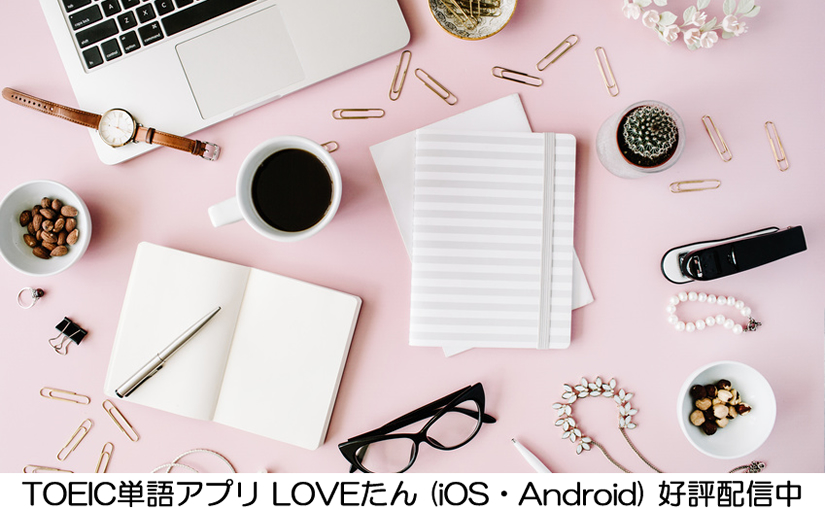このシリーズではTOEIC Part3 の練習問題と解説、更にダイアローグ(会話文)の英文法まで詳しく解説します。
「Questions」の下にあるオーディオボタンを押すと、Part3問題のダイアローグが再生されます。ダイアローグの内容がわかるまで繰り返しリスニングした後で、以下の設問を解いてください。
TOEIC Part3 練習問題 No.3
Questions
Questions 1 through 3 refer to the following conversation.
1. Where do the speakers most likely work?
(A) At a hot spring resort
(B) At a travel agency
(C) At an airport
(D) At a television station
2. What type of customer does the woman think they should target?
(A) People in their 20s
(B) People under 40 years old
(C) People over 40 years old
(D) People who are 40 years old
3. What kind of advertisements are the speakers going to create?
(A) Advertisements themed around anime and manga
(B) Advertisements using images of ninja and geisha
(C) Advertisements that promote Japan as a place with many traditional hot springs
(D) Advertisements that promote Japan as a luxury destination with first-rate service
Part3 練習問題の解説
ダイアローグ
ダイアローグの英文
Title: Advertising tours to Japan
M: Anime and manga are becoming more popular every year. (※1) We could produce some anime-themed posters. (※2)
W: We ran a campaign like that recently, but sales didn’t increase as much as we had hoped. I think we should try a new approach to attract a different sort of customer.
M: Which specific types of customer do you have in mind?
W: Our market research shows that most of the people buying tours to Japan are in their 20s or 30s. (※3) So targeting the over 40s could be one way of opening up a new market. (※4) Many of them may not have previously considered Japan when choosing where to go on their vacations.
M: In that case, how about some more traditional images, like geisha or samurai?
W: I think we should go beyond the usual stereotypes and try to highlight some less well-known aspects of Japanese culture.
M: Perhaps a campaign based around hot springs would work. Traditional hot spring resorts are uniquely Japanese, and the excellent service and relaxing atmosphere would appeal to older travellers.
W: Hot springs would probably be a tough sell because Americans are generally not used to bathing together with strangers. Still, you might be on to something with the focus on good service. (※5) We could have success with ads that promote Japan as a luxury destination with first-rate service and gourmet food. (※6)
ダイアローグの英文法解説
【※1】 Anime and manga are becoming more popular every year.
一般的な事実を述べる場合には通常以下の例文のように名詞の複数形を使います。例:Japanese video games are popular all over the world(日本のテレビゲームは世界中で人気です。)しかし、animeやmangaなど日本語の単語がそのまま英単語としても使われている場合は、日本語に名詞の複数形がないために不可算名詞として扱うことが多いです。したがって、問題文のanimeとmangaには複数形を表すsはついていません。
【※2】 We could produce some anime-themed posters.
この文では「アニメをテーマにしたポスターを作る」という提案がcouldを使ってされています。We should…と表現すると「こうした方がいい」、「こうすべきだ」という強いニュアンスが出ますが、we couldとすると「あくまで一つの選択肢として提案する」という控えめなニュアンスの表現になります。
【※3】 Our market research shows that most of the people buying tours to Japan are in their 20s or 30s.
20s(20代)、30s(30代)という年齢の範囲を表す表現の前には必ず所有格代名詞を使います。この文ではtheirが、以下の例文ではhisが使われています。例:He is in his 50s.(彼は50代です。)early, mid-, lateという形容詞を使えば、年齢の範囲をさらに限定して表現することができます。例:early 20s(20代前半)mid-20s(20代半ば)late 20s(20代後半)ただし、英語には日本語の「10代」に相当する単語がなく、10sという表現はしせん。日本語の「10代」に最も近い単語にteenagerがありますが、この単語が表すのは「13~19歳の人」で10~12歳は含まれません。例:She is a teenager.(彼女はティーンエイジャーです。)
【※4】 So targeting the over 40s could be one way of opening up a new market.
この文のthe over 40sは(3)で説明したin their 20sと似た表現ですが、使い方が少し異なります。(3)で説明した20sは「20代」という意味でしたが、the over 40sは「40歳以上の人達」という意味の名詞です。また、「39歳以下の人達」という意味でthe under 40sと表現することもできます。ただし、単にtheをつければいいというわけではなく、例えば「20代の人達」という意味でthe 20sと言うことはできず、「30代前半の人達」という意味でthe early 30sという言い方をすることはできません。「20代の人達」と述べる場合にはpeople in their 20s、「30代前半の人達」と述べる場合にはpeople in their early 30sと表現する必要があります。なお、ある人の年齢が「40歳以上である」と言いたい場合はHe is over 40(彼は40歳を超えています)と表現します。
【※5】 Still, you might be on to something with the focus on good service.
stillは「まだ」、「いまだに」といった意味で使われる副詞ですが、この文のように、「それでも、それにもかかわらず」という意味で接続詞のようにして使うこともできます。例:I tried my best. Still, I failed again.(私は全力を尽くした。それにもかかわらずまた失敗した)文中のbe on to somethingは「何かを掴んでいる」というニュアンスで使う表現で、良さそうなアイデアを思いついた時や物事の真相が分かったかもしれないと感じた時に使います。
【※6】 We could have success with ads that promote Japan as a luxury destination with first-rate service and gourmet food.
これは「~という広告で成功するかもしれない」という意味の文章ですが、文中のcouldは「可能性」を表しています。mightもcouldと同様に可能性を表す表現として使うことができます。例:We might have success with online advertising.(オンライン広告で成功するかもしれない)
ダイアローグの日本語訳
男性:アニメと漫画は年々人気が高まっているよ。アニメをテーマにしたポスターを作ってもいいね。
女性:最近そのようなキャンペーンをしたけど、売上は期待していたほど上がらなかったわ。違う層の顧客を獲得するために、新しいアプローチをすべきじゃないかしら。
男性:具体的にどのような顧客層を考えている?
女性:私達の市場調査によると日本へのツアーを購入している人の大半は20代や30代だから、40歳以上の人をターゲットにすれば新たな市場を開拓できるかもしれないわ。40歳以上の人の多くは日本を旅行先として考えたことはないんじゃないかしら。
男性:それなら、芸者や侍みたいなもっと伝統的なイメージを使うのはどう?
女性:ありきたりなステレオタイプに捉われずに、日本文化のあまり知られていない部分を強調したらいいと思う。
男性:温泉を中心としたキャンペーンなら上手くいくかな。伝統的な温泉リゾートは日本独自のものだし、素晴らしいサービスとリラックスできる雰囲気は中高年の旅行者にうけるよ。
女性:一般的にアメリカ人は知らない人と一緒に入浴することに慣れていないから、温泉はちょっと難しそう。でも、良いサービスに焦点を当てるのはいい考えかもしれないわ。一流のサービスとグルメを堪能できる贅沢な旅行先として日本を宣伝する広告でツアーの売上が伸びるかもしれないわね。
設問の答えと解説
Questions1: 正解は(B)
1. Where do the speakers most likely work?
(A) At a hot spring resort
(B) At a travel agency
(C) At an airport
(D) At a television station
二人の人物はどこに勤務していますか?
(A) 温泉リゾート
(B) 旅行会社
(C) 空港
(D) テレビ局
【解説】女性の発言にmost of the people buying tours to Japan are in their 20s or 30s(日本へのツアーを購入している人の大半は20代や30代だ)とあることから、二人がツアーを販売する会社、つまり旅行会社に勤めていることが分かります。Many of them may not have previously considered Japan when choosing where to go on their vacationsのvacationは「休暇」という意味ですが、「旅行のためにとる休暇」というニュアンスをもつ単語です。また、Japan as a luxury destinationのdestinationは「目的地」という意味ですが、ここではツアーの行き先を表しているので「旅行先」というニュアンスがあります。
Questions2: 正解は(C)
2. What type of customer does the woman think they should target?
(A) People in their 20s
(B) People under 40 years old
(C) People over 40 years old
(D) People who are 40 years old
女性がターゲットにすべきと考えているのはどのような客層ですか?
(A) 20代の人
(B) 40歳以下の人
(C) 40歳以上の人
(D) 40歳の人
【解説】女性の発言内のthe over 40sは「40歳以上の人達」という意味の名詞句なので、正解はCです。
Questions3: 正解は(D)
3. What kind of advertisements are the speakers going to create?
(A) Advertisements themed around anime and manga
(B) Advertisements using images of ninja and geisha
(C) Advertisements that promote Japan as a place with many traditional hot springs
(D) Advertisements that promote Japan as a luxury destination with first-rate service
二人の人物はどのような広告を作ろうとしていますか?
(A) アニメと漫画をテーマにした広告
(B) 忍者と芸者のイメージを使った広告
(C) 日本を「伝統的な温泉がたくさんある場所」として宣伝する広告
(D) 日本を「一流のサービスを満喫できる贅沢な旅行先」として宣伝する広告
【解説】冒頭で男性が提案したアニメと漫画をテーマにした広告は、女性の発言によると過去に失敗しています。また、忍者と芸者のイメージはステレオタイプであるため、温泉はアメリカ人になじまないテーマであるため、女性に否定されています。女性の最後の発言にpromote Japan as a luxury destination with first-rate service and gourmet food(一流のサービスとグルメを堪能できる贅沢な旅行先として日本を宣伝する)とあることから、正解はDであると分かります。
[part3-a8net1]

